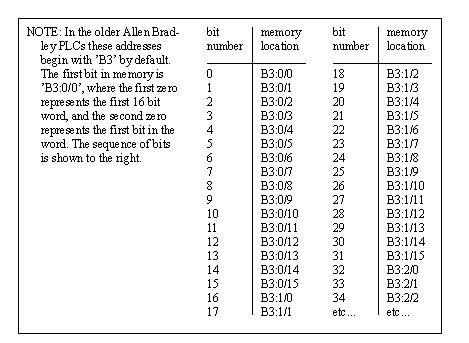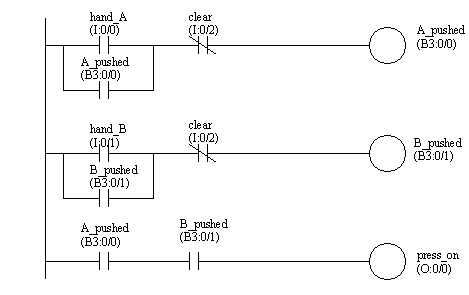INTERNAL BITSSimple programs can use inputs to set outputs. More complex programs also use internal memory locations that are not inputs or outputs. These Boolean memory locations are sometimes referred to as ’internal relays’ or ’control relays’. Knowledgeable programmers will often refer to these as ’bit memory’. In the newer Allen Bradley PLCs these can be defined as variables with the type ’BOOL’. The programmer is free to use these memory locations however they see fit. 
An example of bit memory usage is shown in Figure 8.1 An example using bit memory (older notations are in parentheses). The first ladder logic rung will turn on the internal memory bit ’A_pushed’ (e.g., B3:0/0) when input ’hand_A’ is activated, and input ’clear’ is off. (Notice that the Boolean memory is being used as both an input and output.) The second line of ladder logic similar. In this case when both inputs have been activated, the output ’press on’ is active. 
Figure 8.1 An example using bit memory (older notations are in parentheses) Bit memory was presented briefly here because it is important for design techniques in the following chapters, but it will be presented in greater depth after that. |